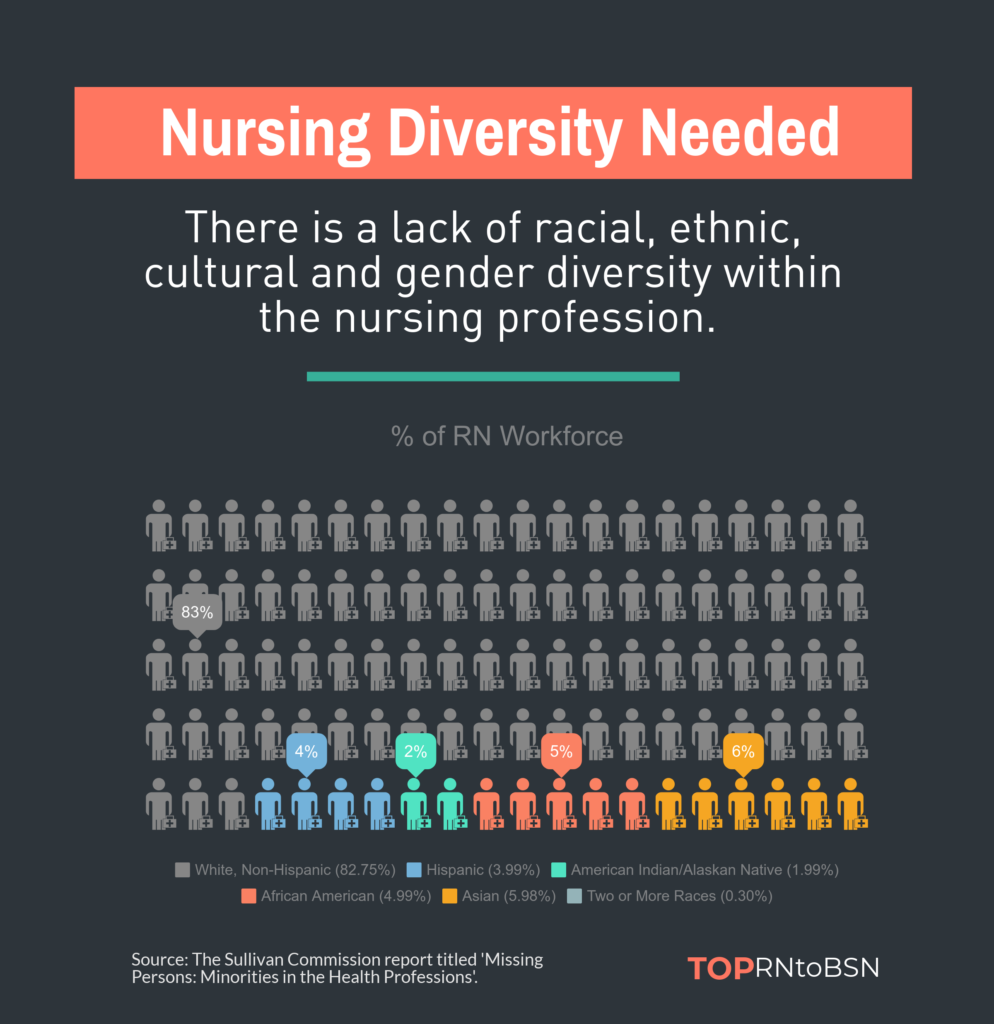
Cultural Competency
Cultural competence in nursing is having the skillset, attitude, and knowledge necessary to care for patients from diverse backgrounds.
Diversity is an important issue across all industries including nursing. Historically, nurses have been predominately white and female, according to census data reviewed by the American Journal of Nursing. We need diversity in healthcare for a number of reasons, including the ability of nurses to interact effectively with all patients. Since nursing diversity is still an issue today, a number of initiatives attract more men and minorities to the field of nursing.
Diversity in Nursing
In the field of nursing, there has become a call for nurses to be as diverse as the patients they serve. Nurses from different backgrounds will help develop a better understanding of what can impact a person’s overall well-being. There are a number of studies to improve cultural competence in nursing. According to the Journal for the Critical Care Nurse, demonstrating cultural competence is extremely important for critical care nurses who are providing care in high-stress environments. Nurses must have an understanding of different cultures. Then they know how to show respect when decisions are made that don’t always line up with mainstream healthcare practices.
In addition to attracting different cultures to the field of nursing, healthcare agencies can take steps to train current staff on how to provide culturally competent care. Training programs teach nurses about the expectations of patients from diverse backgrounds. For instance, knowing about the customs and communication rules for different ethnicities can assist nurses in providing the best care possible for each individual.
Nursing Diversity Needed

Men in Nursing
The American Association for Men in Nursing has started a campaign to increase the presence of males in the nursing field by at least 20% by the year 2020. The call for more male nurses comes from patients who feel more comfortable with healthcare providers of the same gender. As an example, a male patient may feel more comfortable with a male nurse who needs to insert a catheter or change a bedpan. The number of men in nursing has steadily risen since the 1970s. According to the U.S. Census Bureau, only 2.7% of registered nurses were male in 1970. In 2011, 9.6% of all registered nurses are male.
Minorities and LGBT in Nursing
Another part of improving diversity in nursing is increasing the number of minorities in the field. Out of the three million plus nurses currently employed in the United States, approximately 25% come from racial or ethnic minorities. Registered nurses have an even lower percentage of minorities with only 13% of the population. Initiatives like the Campaign for Action are making strides toward increasing the number of minorities who become nurses. The non-profit organization provides resources to prospective nurses who are minorities with incentives such as educational grants and scholarships.
Diversity in healthcare also includes the employment of LGBT nurses. LGBT individuals face stigma at every stage of their lives. With more LGBT nurses, the hope is patients will feel less shame and stigma when seeking out care.
Although diversity in nursing has not made as many strides as anticipated, the number of individuals from different backgrounds has increased substantially in response to changing societal norms.
Related:






